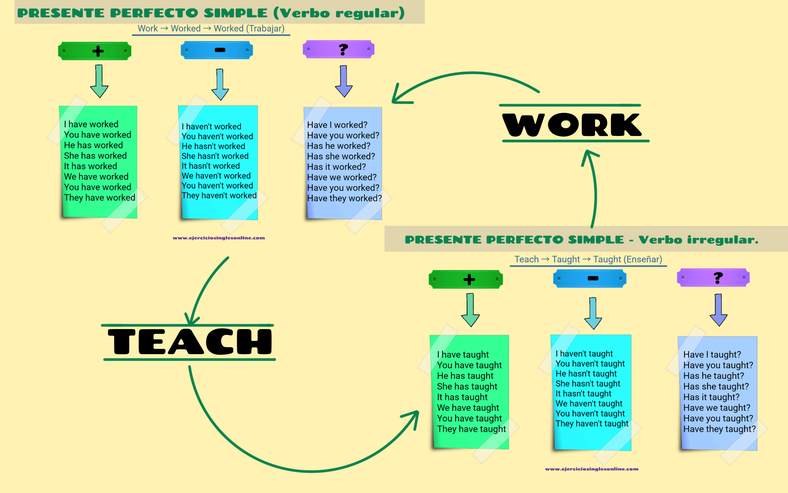PRESENT PERFECT SIMPLE
Description: Present perfect simple in English. In this section we analyze the use and formation of the present perfect simple in English. You can access our online exercises with self-evaluation.
USE
- It refers to an action that happened in the past, but very close to the present. In this way, it can be said that present perfect simple is near past.
Example: I have been in Madrid this morning.
- To emphasize the result of an activity.
Example: I have read five e-mails today.
-To indicate how many times an action happens.
Example: I have watched this film three times.
STRUCTURE
- Afirmative: subject + have/has + participle (-ed regular verbs/3rd column in irregular verbs) + complements
- Negative: subject + haven't/ hasn't + participle + complements
- Question: Have/ Has + subject + participle + complements?
ADVERBS
ALREADY: I have already read this book. (Only in affirmative sentences)
YET: I haven’t read this book yet. (In negative and questions sentences)
JUST: I have just eaten. (When you finish to do something)
NEVER: I have never been in England (only affirmative sentences, although the meaning is negative).
EVER: I haven’t ever been in England. / Have you ever been in England? (In negative and interrogative questions. In negative sentences it means “never”.
SINCE: I have lived in this city since 2005. It indicates the beginning of an action, but we never know when it finishes.
FOR: I have lived in this city for five years. It refers to “a period of time”, there’s a beginning and an end of the action.

